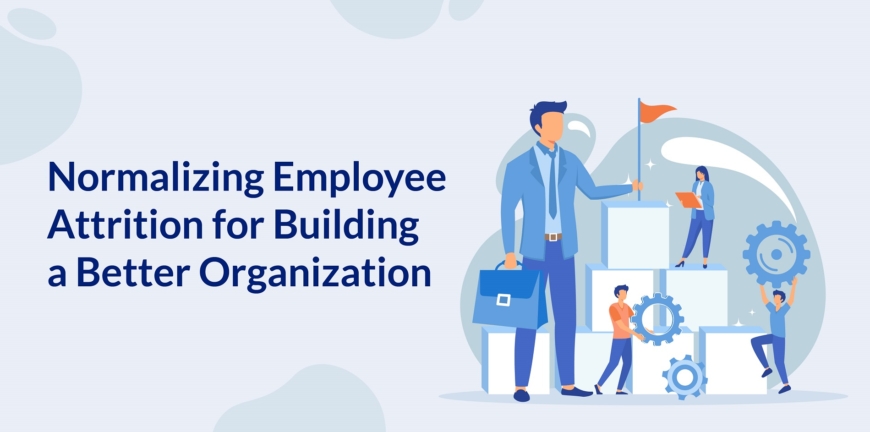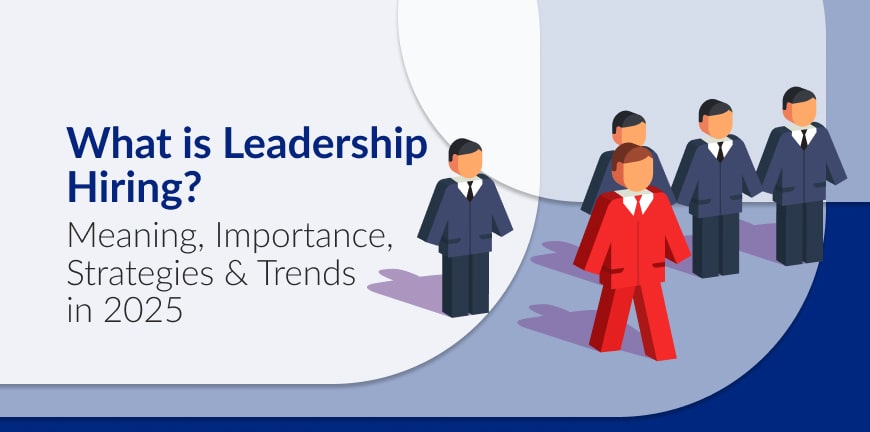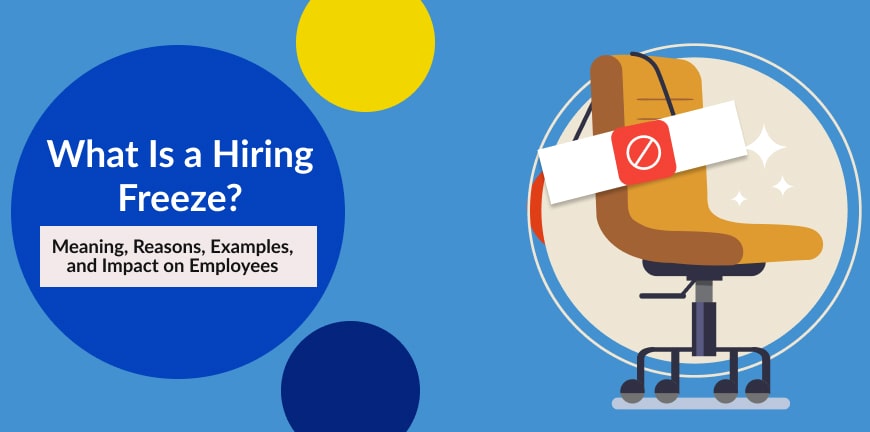
Normalizing Employee Attrition to Build a Better Organization
09/05/2023
How Has Employee Performance Management Changed Post Covid-19
13/05/2023You may be familiar with “quiet quitting or moonlighting”, an infamous term used to describe employees who were no longer ready to go above and beyond at work and do only what their job description entailed. A recent study by Gartner turned the tables around by bringing the concept of Quiet hiring to light, making it a top work trend of 2023.
The term Quiet hiring has been making the rounds on social media off lately. But it isn’t what it sounds like – There is no quiet nor is there any actual hiring involved.
Quiet hiring is more of a counter-response to the quiet quitting trend. It is referred to as a process where an employer obtains new talent without recruiting a new employee.
Let’s break it down for you.
What is Quiet Hiring?
Quiet hiring is a workforce trend where organizations move employees from one department to another and make use of existing skill sets to tackle staffing shortages without hiring new employees to the team. Although it doesn’t sound very appealing, a lot can be gained if organizations capitalize on the element of talent development within the organization. Leaders and managers will play a critical role in making quiet hiring decisions and creating opportunities for employees to grow and contribute to the organization through training opportunities.
The practice of Quiet hiring can be made successful by-
- Employing workers with specific, high-demand skills on a contract basis, temporarily to meet the staffing demands.
- Deploying employees to different departments to work on projects.
- Upskilling employees by providing the necessary training.
Why is Quiet Hiring Prevailing?
The quiet hiring trend came into existence because of the economic slowdown, and the huge talent shortage faced by job markets. The trend was deemed successful by employers with limitations on staffing budgets and found it hard to fill their in-demand job roles, with people with specific skill sets.
While staffing creatively isn’t something new and has been practised extensively in the past, quiet hiring is just a modern take on the issues faced due to workforce fluctuations.
Quiet hiring led to organizations strategically assessing the talent they have within and moving them from one department to another, as they saw fit, depending on their skill sets.
The trend involved in-company trade-offs, meaning leadership made a strategic decision as to which area of the company had a dearth of talent and areas that could sacrifice their employees but maintain productivity. But in most cases, this was followed by another problem wherein no talent within the organisation was instantly ready to be redeployed to fill particular roles, rather, employers can redesign roles to make it more acceptable.
How do Employers Benefit from Quiet Hiring?
To reap the maximum benefits out of it and make it work in your favour you need to implement quiet hiring the right way in your organization.
Some of the ways Quiet hiring benefits employers-
- Cost-effective way to close talent gaps without hiring new employees.
- Leverages internal talent to meet immediate needs.
- Avoids indulging in a lengthy recruitment process.
- Swift deployment of resources for high-priority business areas
- Employee upskilling increases retention rates, engagement, and productivity
Google successfully implemented Quiet hiring. The Silicon Valley company uses the trend to identify staff who are performing above and beyond their job descriptions to move them to departments facing skill shortages and make the most out of it, giving them the leverage to expect raises and bonuses for a job well done. When there are no employees in-house available to be trained in a specific skill set, they hire contract or gig workers on a contract basis for a particular period or the completion of a project.
How is Quiet Hiring Beneficial for Employees?
While Quiet hiring is bought into the picture to help aid companies in their continuous quest for success, there are a lot of scopes for employees to benefit from the trend too. A recent poll of more than 1100 workers conducted by Monster revealed that 70% of respondents viewed quiet hiring as an opportunity to upskill and expand their career horizon.
If you’ve been asked to take on an assignment or a set of duties aside from your KRA, clarify expectations before you take up the task. Never take on more than you can handle, what we mean is don’t be a pushover! Make sure that your performance is documented. Work with your manager to set up the necessary metrics to measure the same. If you’re taking on more work, then it’s fair to ask for an increase in pay or other benefits like a bonus, flexible hours, or additional time off.
As an employee, you get the chance to step out of your comfort zone, learn new skills, work with different people, expand your network, understand the working of a department you always had an interest in and become a more well-rounded valuable employee. And if you do excel in the department you were deployed to, it’s a step up you can use as leverage for a future promotion.
To truly benefit from this practice, as an employer you need to be careful and take an ethical approach, to avoid making employees feel like they are being taken for granted.
But, coming to the real question, how can this benefit an employee?
-
Turn it into an opportunity to accelerate your career trajectory
As a leader, you need to present them with assignments that can turn out to be a learning opportunity with the potential to earn more. As an employee, consider what skills and experiences are important to you and ways to get the value that you want out of this role.” leverage the opportunity that’s being proposed to you now to build your career in the future.”
-
Clarifying job expectations
As an employer, If the role/ task you are planning to move an employee to is something that needs to be worked on only for a limited period, make sure that you communicate it to them clearly. Transparency and honesty are traits employees not only appreciate but respond to positively.
And as an employee, you also have the responsibility to clarify expectations. Have a candid conversation with your manager to get a clear picture of the new role or responsibilities.
-
Set clear work-life boundaries
Don’t make it into a recipe for burnout. Mc Rae from Gartner says if you’re being asked to take on more responsibility, you should also be mindful to ask about the other tasks you’re being relieved from. Ensuring your workload is reasonable and achievable is a key part of maintaining your work boundaries.
-
Ask for whatever resources you need to thrive in the role
Pay raise is the first thing that pops in every employee’s head when there is a change happening the professional front. And rightfully so. Additionally make sure you ask for every resource you require to excel in the field, whether it’s a training program or certification you can do, conferences you can attend, or learning and development opportunities the company can fund or any other thing of the nature.
Conclusion
Employees today, don’t see career development and skill enhancement as privileges that only the “top potential employees” have the right to exercise—but as a right that every worker should have. This is why among the leadership capabilities respondents named the failure to “develop others” as the top risk for faltering employee engagement.
The plus side? If organizations are truly looking to capitalize on quiet hiring and develop the talent they already have, they don’t have to look too far, they just must look within: Encourage frontline leaders to tap into their team’s desire to learn and grow.




